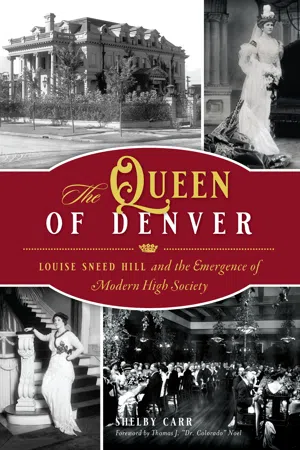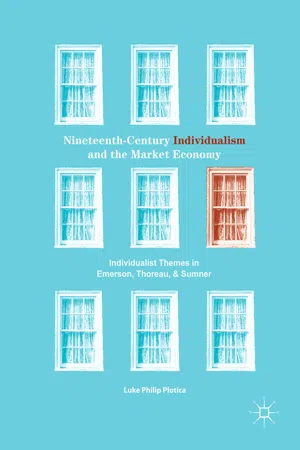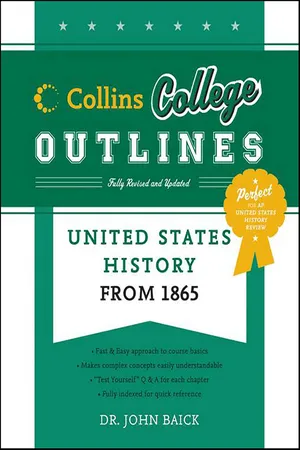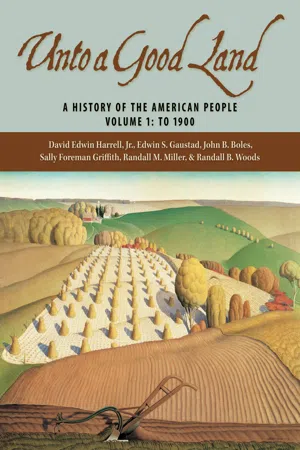History
Gilded Age New York
Gilded Age New York refers to the period in the late 19th century characterized by rapid economic growth, industrialization, and ostentatious displays of wealth. It was a time of extreme social inequality, with the wealthy elite living lavishly while many others struggled in poverty. The era saw the rise of influential figures like J.P. Morgan and the construction of iconic landmarks such as the Brooklyn Bridge.
Written by Perlego with AI-assistance
Related key terms
7 Key excerpts on "Gilded Age New York"
- eBook - ePub
The Queen of Denver
Louise Sneed Hill and the Emergence of Modern High Society
- Shelby Carr(Author)
- 2020(Publication Date)
- The History Press(Publisher)
3 IT HAPPENED ON FIFTH AVENUEThe Gilded Age, an era of decadence in the United States, is still known today as perhaps the most lavish period in the country’s history. Money was key and appeared to rule all. Modest, unassuming dress and decorative style was out of fashion, and the more apparent you could display your great wealth through opulent parties and expensive objects the better. There was nowhere in which opulence, high society and class division were more apparent than they were in New York City.The formation of the bourgeoisie in New York began centuries before it came to full fruition during the Gilded Age. Families such as the Astors, Beekmans, Schermerhorns, Van Burens, Van Rensselaers, and Whitneys settled in New York during and prior to the eighteenth century and had made somewhat of a name for themselves. They were predominantly Dutch settlers and were known as the Knickerbockers, so named after the knee-length pants that were worn by the Dutch. According to historians Gail MacColl and Carol Wallace, Knickerbocker families were typically landowners, heirs, lawyers and bankers who lived in modesty in side-by-side brownstones, hosted sophisticated events, and dressed with a moderate refinement and practicality.134 Some knickerbocker men involved themselves in big business and continued to grow their family fortunes during the late nineteenth century. The Knickerbocker society developed into the aristocracy of “old” New York during the Gilded Age. They ran the press in New York City and heavily controlled what newspaper reporters said about them and others in their social spectrum. This helped them effectively create their class exclusivity. Therefore, they were able to create a public persona in which they were the epitome of high class and unattainable but forever desired success.New York City was a thriving metropolis, and by 1800, it was the largest city in America. As the country’s cultural and social capital, the city continued to flourish during the Gilded Age. New York City, which had once held a small population of thirty thousand at the turn of the nineteenth century, roughly doubled in size every decade henceforth. This rapid increase in population resulted in approximately 4 million people residing within the city limits by the beginning of the twentieth century.135 - eBook - ePub
The Restless City
A Short History of New York from Colonial Times to the Present
- Joanne Reitano(Author)
- 2018(Publication Date)
- Routledge(Publisher)
7To emphasize the point, Twain wrote a short story about an industrious but impoverished boy who followed Alger’s prescriptions for success only to discover that the rich were mean and miserly instead of kind and generous. “Such is life as I find it,” Twain wryly remarked. His parody of Alger challenged prevailing assumptions that the rich were deserving and superior, whereas the poor were undeserving and inferior. Like Crane and George, Twain questioned the relationship between myth and reality.8Much of reality fed the myth. Befitting its imperial prowess, New York’s accomplishments in this period were grandiose. The economic city was energized by robber barons, so called for the unprecedented and unsavory methods they used to dominate their businesses. John D. Rockefeller’s Standard Oil Trust, Cornelius Vanderbilt’s New York Central Railroad, Andrew Carnegie’s steel trust, Jay Gould’s brokerage firm, and J. P. Morgan’s banking house made Wall Street the symbolic and actual home for new companies of phenomenal wealth controlled by a few men. Aggressive businessmen, notes historian Thomas Kessner, were always “New York’s heroes.” In the Gilded Age, they made Gotham the crown jewel of America’s economic empire—the nexus for national and international business.9Rockefeller (1839–1937) was the archetypical robber baron of the era. A pious farm boy from western New York, Rockefeller’s frugality, shrewdness, and hard work led to big city success and stupendous wealth. He personified the rags to riches myth, minus Ragged Dick’s cheerful charm. Although a generous philanthropist in his later years, Rockefeller’s austere manner, ruthless business techniques, and “a mouth that was a slit, like a shark’s” confirmed widespread opinion that he was “the greatest villain” of the Gilded Age. To many, however, he remains a brilliant innovator who modernized the American economy.10 - eBook - ePub
- G. R. Thompson(Author)
- 2011(Publication Date)
- Wiley-Blackwell(Publisher)
Chapter 16 The “Gilded Age” Genteel Critics and Militant MuckrakersThe Gilded Age (1873) by Mark Twain and Charles Dudley Warner gave the Age of Big Business one of its most memorable labels. In American cultural history, the term “Gilded Age” invokes the period from the end of the Civil War through the 1890s, and slightly beyond. Associated with the rapid rise of Big Business are the Labor Movement, the Factory System, and the attempt of Corporate Capital (personified as the Robber Barons) to control it all – by violence if necessary. Within this time frame, political historians have identified other periods, most notably Reconstruction and the Progressive Era, terms embodying the contradictory tendencies of the times. But for most literary scholars and cultural critics, the “Gilded Age” is the label that has stuck.1The term emphasizes the problems and evils of laissez-faire capitalism. Gilded means covered with a thin layer of (usually) fake gold. In their comic Dickensian way, Twain and Warner strip away the pretty surface and expose the ugliness beneath the top layer of society, politics, and business. The word gilded also suggests American Victorian respectability and artifice, from the gilt-edges and decorations of fake books in simulated libraries, to elaborate gilded picture frames in over-decorated parlors, to insincere piety regarding personal behavior and business ethics.Novels of social criticism in the era generally took one of two forms: “genteel criticism” and “muckraking.” Among the Genteel Critics and historical romancers who sometimes cast a jaundiced eye on American manners, morals, and institutions are Henry Adams, Booth Tarkington, Winston Churchill, Robert Herrick, and W. D. Howells. The Muckrakers wrote both fiction and nonfiction in which they more militantly exposed the ugly underside of American capitalism and putative democracy. Important muckraking works include novels by Rebecca Harding Davis, John William De Forest, and David Graham Phillips; and journalistic exposés by Ida Tarbell, Lincoln Steffens, Jacob Riis, Thorstein Veblen, and Helen Hunt Jackson. The most famous of the American muckraking novels is Upton Sinclair's The Jungle - eBook - ePub
Nineteenth-Century Individualism and the Market Economy
Individualist Themes in Emerson, Thoreau, and Sumner
- Luke Philip Plotica(Author)
- 2017(Publication Date)
- Palgrave Macmillan(Publisher)
corporations , unions, political parties and machines, national fraternal associations, and the increasingly palpable distinctions of class.The advent of the modern corporation lay at the heart of many of the quantitative and qualitative leaps of scale in Gilded Age life, for it supplied organizational concepts useful to nearly any large undertaking, public as well as private. In hindsight, the USA may seem to have been fated to become “the world’s first ‘corporation nation,’ the first country suffused with corporations ,” since the Anglophone colonies of North America began as “‘[b]odies corporate’ chartered by the British crown” (Wright 2012 , 149; Beatty 2001 , 3). Yet, despite the increasing number of corporations created between 1790 and 1830 and the gradual replacement of state laws and constitutional provisions requiring corporate charters to be granted through special legislative action by general laws of incorporation through the 1840s and 1850s, in 1860, most businesses were still small firms operated as sole proprietorships or partnerships (Wright 2012 , 148–9; 165; Licht 1995 , 133). Partly because of the favorable conditions of the postwar economic hothouse and partly because of the work of skillful entrepreneurs and organizational visionaries, corporatization became a dominant phenomenon of the Gilded Age . The journalist Ambrose Bierce aptly captured the essential innovation of the modern corporation in defining it as an “ingenious device for obtaining individual profit without individual responsibility” (Bierce 1906 /1999 , 29). The kernel of truth in Bierce’s description is that the corporate form provided a mode of organization that transcended limitations and liabilities of natural personhood, allowing many individuals to act together in a common pursuit without tying them personally and completely to the fate of the joint enterprise. Once chartered, the corporationhad a clear legal status and a separate identity from its stockholders. Ownership could easily be transferred through a sale of shares without disturbing operations. As a legal entity, it outlived its creators and was unaffected by their demise or departure. Large amounts of capital could be raised by selling stock or issuing bonds, which gave it mechanisms for perpetual growth under favorable conditions. And it offered shareholders limited liability. The corporation alone was responsible for its debts; the stockholder could lose no more than his investment if the company went under[.] Taken together, these advantages made the corporate form a superb instrument for planned, rational business enterprise on a large scale [and] a general vehicle for private enterprises of many types. (Klein 2007 , 107–8; see also Wright 2012 - Gregory Feldmeth, Christine Custred, Christine Custred(Authors)
- 2015(Publication Date)
- Research & Education Association(Publisher)
Chapter 8 Industrialism and the Gilded Age (1865–1898)The period between the end of the Civil War and the beginning of the 20th century is known as the Gilded Age. Mark Twain first used the term “Gilded Age” to describe the years after the Civil War. He saw rampant greed, materialism, and corruption dominating American political and social life and viewed the outward appearance of prosperity and gaiety as being nothing more than a thin coating of gold on a fundamentally flawed society.Politics of the Period, 1877–1882The presidencies of Abraham Lincoln (1861–1865) and Theodore Roosevelt (1901–1909) mark the boundaries of half a century of relatively weak executive leadership, and legislative domination by Congress and the Republican Party.The Compromise of 1877With Southern Democratic acceptance of Rutherford B. Hayes’s Republican presidency, the last remaining Union troops were withdrawn from the Old Confederacy (South Carolina, Florida, Louisiana), and the country was at last reunified as a modern nation-state led by corporate and industrial interests. The Hayes election arrangement also marked the government’s abandonment of its earlier vague commitment to African American equality.Republican Factions“Stalwarts” led by New York Senator Roscoe Conkling favored the old spoils system of political patronage. “Half-Breeds” headed by Maine Senator James G. Blaine pushed for civil service reform and merit appointments to government posts.Election of 1880In the 1880 presidential election, James A. Garfield of Ohio, a Half-Breed, and his vice presidential running mate, Chester A. Arthur of New York, a Stalwart, defeated the Democratic candidate, General Winfield S. Hancock of Pennsylvania and former Indiana congressman William English. Tragically, the Garfield administration was brief, as the president was assassinated in 1881 by a disturbed office-seeker, Charles Guiteau. Though lacking much executive experience, the stalwart Arthur had the courage to endorse reform of the political spoils system by supporting passage of the Pendleton Act (1883), which established open competitive examinations for civil service positions.- No longer available |Learn more
- John Baick, Arnold M. Rice(Authors)
- 2011(Publication Date)
- Collins Reference(Publisher)
CHAPTER 3The Rise of Industrialism in the Gilded Age
1866: National Labor Union founded; Field lays transatlantic cable.1869: Union Pacific transcontinental line completed; Knights of Labor founded.1873: Panic of 1873 begins.1876: Bell invents the telephone.1877: Munn v. Illinois decided; railroad workers strike.1879: Rockefeller organizes Standard Oil Trust.1886: Haymarket Square Riot takes place; American Federation of Labor (AFL) founded.1887: Wabash Rate Case decided; Interstate Commerce Act passed.1890: Sherman Antitrust Act passed.1892: Carnegie Steel Company workers strike.1894: Pullman Palace Car Company workers strike.1905: Industrial Workers of the World (IWW) founded.1908: Muller v. Oregon decided.In the quarter century after 1865, the nation witnessed the rise of big business. The Civil War was a catalyst for this change, as the unprecedented demands of the war led to a restructuring of the Northern economy and government. Before the century was over, America shifted its economic priorities from those of a rural agricultural nation to those of an urban industrial nation. The tremendous expansion of business enterprise was accompanied by the spread of the Gilded Age’s dominant economic theory, which held that the business sector should be left to individual initiative. However, the monopolistic practices of the large industrial firms, the abuses of the railroads, and the support of the federal government showed that free enterprise was more theory than practice. Eventually, the scale of the abuse led to popular resistance, and the federal government would be forced to curb the greatest abuses of the economic order.By the 1870s, the American worker felt the impact of this new economic system. The most obvious change was the reliance on the unskilled factory worker, replacing the skilled artisans of the past. Consequences of this change included the loss of bargaining power usually enjoyed by skilled workers; the breakdown of reciprocal employer-employee relations in the new corporations; and increased competition for jobs resulting from an expanded labor force that now included former slaves, women, children, and immigrants. For American laborers, low wages, long hours, and dangerous working conditions became the norm - eBook - ePub
Unto a Good Land
A History of the American People, Volume 1: To 1900
- David Edwin Harrell, Edwin S. Gaustad, John B. Boles, Sally Foreman Griffith(Authors)
- 2005(Publication Date)
- Eerdmans(Publisher)
21 The Politics of the Gilded Age Chapter 21 at a Glance Political Parties and Political Stalemate A Delicate Balance of Power Muted Differences Political Culture Lingering Effects of the Civil War Getting Out the Vote The Spectacle of Campaigns Women’s Influence Reining in the Spoilsmen The Appeal of Civil Service Reform Newspapers and Reform Impetus for Reform The Presidency and Congress Remade The Money Question The Depression of 1893 and the Gold Standard The Populist Challenge Farmers Come Together Populist Themes The Cross of Gold and the Election of 1896 Conclusion: The End of the Old and the Rise of the New I N HIS NOVEL The Gilded Age (1873), written with Charles Dudley Warner, Mark Twain gives a tour of the nation’s capital. It teems with schemers, lobbyists, jobbers, and other rogues eager to fleece the public and an equal number of innocents abroad gullible and greedy enough to be easy prey. Men and women intrigue for congressional favors and patronage and push countless false hopes for the fast buck, from eyewash (“the Infallible Imperial Oriental Optic Liniment”) to railroad land grants, all under the guise of the public good. Bribery, vote stealing, and gaseous oratory distinguish the successful politician. An honest person is a fool. So corrupting is the political and social world Twain describes that it transforms the once virtuous orphan girl heroine of his story into a hardboiled lobbyist who ends her life in scandal. An air of impermanence and swindle blows everywhere through the seat of the Republic. Washington, by Twain’s count, also has “more boarding-houses to the square acre … than any other city in the land,” but if you try to pass yourself off as a congressman in seeking a room in any one of them, the landlady will say “full” or demand payment in advance
Index pages curate the most relevant extracts from our library of academic textbooks. They’ve been created using an in-house natural language model (NLM), each adding context and meaning to key research topics.






